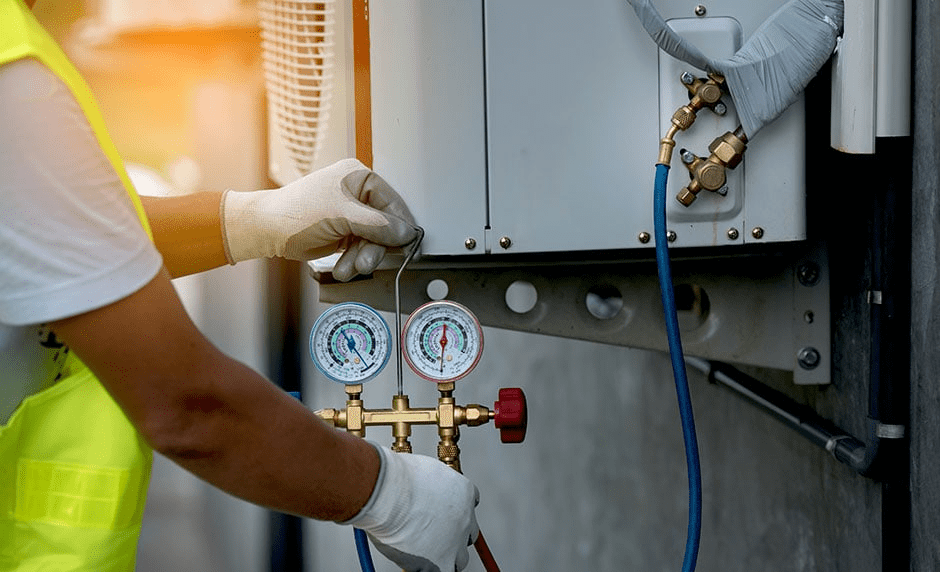Fitting a heating apparatus transcends mere warmth—it embodies serenity, judicious energy usage, and long-term fiscal prudence. Whether you’re inhabiting a freshly erected dwelling or discarding a bygone mechanism, precise implementation reshapes the entire experience. Here’s a meticulous unraveling of the process.
Understanding a Heating System
A heating apparatus orchestrates an assemblage of devices tasked with tempering your interior ambiance amid frosty intervals. Ranging from furnaces to thermal pumps, such systems ensconce your residence in a haven of warmth as mercury plummets.
The Cruciality of Proper Installation
Visualize the installation of heating components as laying the cornerstone of a citadel. A flawed execution breeds inflated energy expenditures, capricious warmth, and relentless repairs. Flawless assembly? That bestows enduring, hassle-free thermal harmony.
Predominant Variants of Heating Systems
- Central Heating Frameworks
Transmit thermal energy from a singular nucleus—boiler or furnace—dispersed via ducts or conduits. - Forced Air Arrangements
An acclaimed selection wherein heated air is thrust through ducts, permeating the abode with swift warmth. - Radiant Heat Dissemination
Employs thermal emission from floors, walls, or ceilings, fostering steady warmth devoid of air circulation. - Heat Pumps
Rather than forging heat, they shuttle existing warmth, particularly efficacious in temperate territories.
Pre-Installation Contemplations
- Spatial Dimensions & Configuration
Expansive abodes necessitate more robust units; modest dwellings prosper with compact, efficient variants. - Energy Efficiency Metrics
Seek superior AFUE or SEER indices to curb recurring utility outlays. - Financial Allocation & Forecasting
From modest electrical heaters to avant-garde geothermal systems, pricing fluctuates substantially. - Fuel Selection (Gas, Electric, Oil)
Choose per availability, running costs, and longevity of upkeep.
Sequential Process of Heating System Integration
- Preliminary Evaluation & Blueprinting
Initiate with a scrupulous audit of insulation, airflow conduits, and thermal requirements. - Appropriate Apparatus Selection
Confer with a certified specialist to match the apparatus with spatial demands. - Preparation of the Site
Purge ducts, arrange vents, and secure a hazard-free installation zone. - DIY or Professional Execution
Though self-installation may entice with cost savings, blunders frequently incur amplified expenditures later.
Blunders to Evade During Installation
- Neglecting Expert Intervention
A credentialed HVAC artisan assures conformity with safety mandates. - Ventilation Oversight
Improper venting, particularly in gas or oil systems, can cultivate perilous carbon monoxide accumulation. - Erroneous Sizing
An undersized mechanism labors ineffectually; an oversized one squanders energy.
Fiscal Scope of Heating System Installation
- Average Ranges per Type
Furnace: $3,000–$7,500
Heat Pump: $4,000–$10,000
Radiant Heating: $6,000–$20,000 - Ancillary Outlays
Permits, duct refurbishments, or integration of intelligent thermostats may elevate the expenditure.
Advantages of Professional Heating Deployment
- Assured Safety & Statutory Compliance
Experts navigate codes with precision, ensuring lawful and secure functioning. - Prolonged Operational Span
Meticulous fitting mitigates mechanical attrition. - Optimized Energy Utilization
Well-anchored units diminish wastage, softening utility burdens.
Post-Installation Stewardship
- Routine Inspections
Yearly evaluations preempt minor flaws from escalating. - Filter Renewal
Swap filters every 1–3 months to preserve seamless airflow. - Seasonal Calibration
Pre-winter maintenance primes the unit for optimal exertion.
Indicators for Replacement
- Thermal Inconsistencies
Uneven warmth or incessant operation signals decay. - Escalating Utility Expenses
Aging mechanisms siphon more energy. - Frequent Repairs
If fixes surpass half the price of a fresh unit, replacement becomes sagacious.
Eco-Conscious Heating Alternatives
- Solar Thermal Arrays
Leverage solar vitality to shrink your carbon trace. - Geothermal Heat Pumps
Exploit subterranean constancy for a greener warmth.
Selecting a Competent HVAC Artisan
- Accreditations & Licensure
Authenticate professional credentials beforehand. - Patron Testimonies
Past clientele shed light on reliability. - Warranty & Service Pacts
Robust warranties safeguard your investment over the years.
DIY Heating System Integration – A Viable Gamble?
Unless well-versed in HVAC intricacies, seldom. Erroneous handling often begets hazards and excessive post-fixes.
Precautionary Mandates During Installation
Maintain ventilation, neutralize electrical currents, and employ safety gear when manipulating instruments.
Emerging Tendencies in Heating Systems
Anticipate autonomous thermostats, greener innovations, and AI-augmented climate moderation.
Closing Reflection
A heating system’s installment is an eminent capital venture—yet, when meticulously orchestrated, it yields comfort, efficiency, and economy for the foreseeable future. Invest time in planning, enlist adept professionals, and nurture the system consistently—your future self shall be grateful.
Inquiries Frequently Raised
- Duration of Installation?
Typically one to three days, contingent upon intricacy. - Most Energy-Efficient Mechanism?
Geothermal pumps and premium furnaces reign supreme. - Self-Installation—Prudent?
Feasible, yet ill-advised sans HVAC proficiency. - Optimal Service Frequency?
Annual maintenance ensures steady performance. - Does an Upgrade Elevate Property Value?
Indeed, contemporary systems enhance appraisal.
